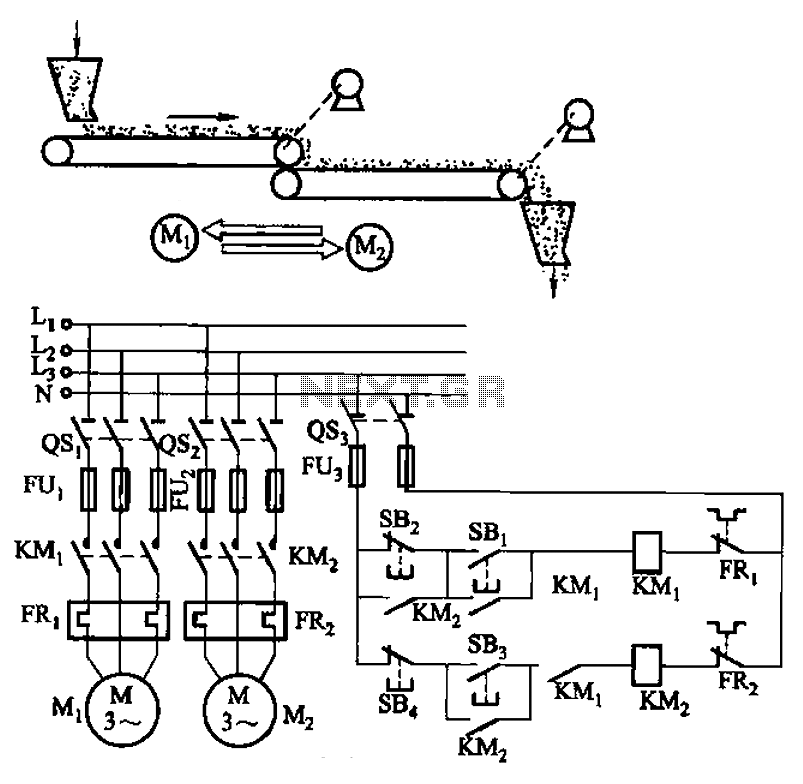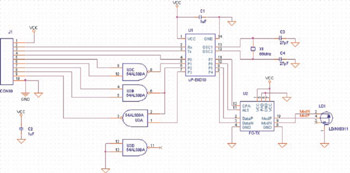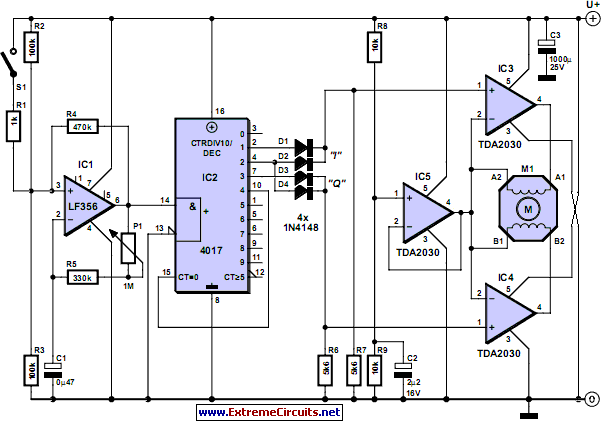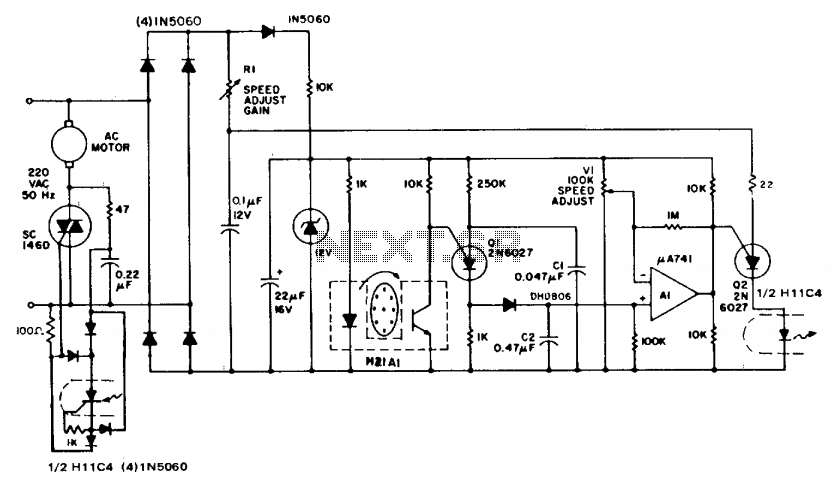
Cassette Motor Speed Calibrator
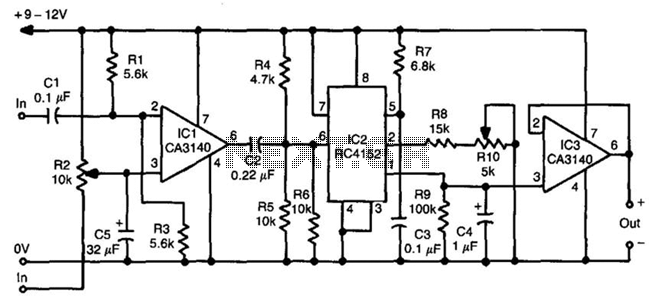
This frequency-to-voltage converter facilitates the calibration of cassette deck speed. It generates a stable 1 kHz tone on the cassette deck and monitors the frequency through the converter. Playback of the tone allows for adjustments to the motor speed until the frequency reading on the converter matches the desired output. The frequency-to-voltage converter is capable of driving an analog meter to display minor variations in tape speed.
The frequency-to-voltage converter circuit is essential for achieving precise calibration of cassette decks, ensuring accurate playback speeds. The core of the circuit typically consists of a frequency-to-voltage converter IC, which is designed to convert frequency input into a proportional voltage output. This output can be easily interpreted by an analog meter or a microcontroller for further processing.
The circuit begins with a stable oscillator that generates a 1 kHz reference tone. This tone is fed into the frequency-to-voltage converter, which utilizes a combination of resistors and capacitors to stabilize the output voltage corresponding to the input frequency. The output voltage can then be displayed on an analog meter, providing a visual representation of the tape speed.
To calibrate the cassette deck, the generated tone is recorded onto the tape. Upon playback, the frequency is monitored by the converter. If the frequency reading is not aligned with the expected 1 kHz, adjustments can be made to the motor speed of the cassette deck. This adjustment process continues until the frequency reading stabilizes at 1 kHz, indicating that the tape speed is accurately calibrated.
Furthermore, the circuit can be designed to incorporate additional features such as a low-pass filter to reduce noise and improve the accuracy of the frequency readings. Additionally, the use of a potentiometer can allow for fine-tuning of the output voltage, enhancing the calibration process's precision. Overall, this frequency-to-voltage converter circuit is a critical tool for audio engineers and technicians working with cassette decks, ensuring high fidelity in audio playback. This frequency/voltage converter enables calibrations of cassette-deck speed. It records a steady 1-kHz ton e on the cassette deck, and monitors the frequency on the converter. Then, play the tone back and adjust the motor speed until you get the same frequency reading on the converter. The frequency/ voltage converter can drive an analog meter to indicate small variations in tape speed.
The frequency-to-voltage converter circuit is essential for achieving precise calibration of cassette decks, ensuring accurate playback speeds. The core of the circuit typically consists of a frequency-to-voltage converter IC, which is designed to convert frequency input into a proportional voltage output. This output can be easily interpreted by an analog meter or a microcontroller for further processing.
The circuit begins with a stable oscillator that generates a 1 kHz reference tone. This tone is fed into the frequency-to-voltage converter, which utilizes a combination of resistors and capacitors to stabilize the output voltage corresponding to the input frequency. The output voltage can then be displayed on an analog meter, providing a visual representation of the tape speed.
To calibrate the cassette deck, the generated tone is recorded onto the tape. Upon playback, the frequency is monitored by the converter. If the frequency reading is not aligned with the expected 1 kHz, adjustments can be made to the motor speed of the cassette deck. This adjustment process continues until the frequency reading stabilizes at 1 kHz, indicating that the tape speed is accurately calibrated.
Furthermore, the circuit can be designed to incorporate additional features such as a low-pass filter to reduce noise and improve the accuracy of the frequency readings. Additionally, the use of a potentiometer can allow for fine-tuning of the output voltage, enhancing the calibration process's precision. Overall, this frequency-to-voltage converter circuit is a critical tool for audio engineers and technicians working with cassette decks, ensuring high fidelity in audio playback. This frequency/voltage converter enables calibrations of cassette-deck speed. It records a steady 1-kHz ton e on the cassette deck, and monitors the frequency on the converter. Then, play the tone back and adjust the motor speed until you get the same frequency reading on the converter. The frequency/ voltage converter can drive an analog meter to indicate small variations in tape speed.

